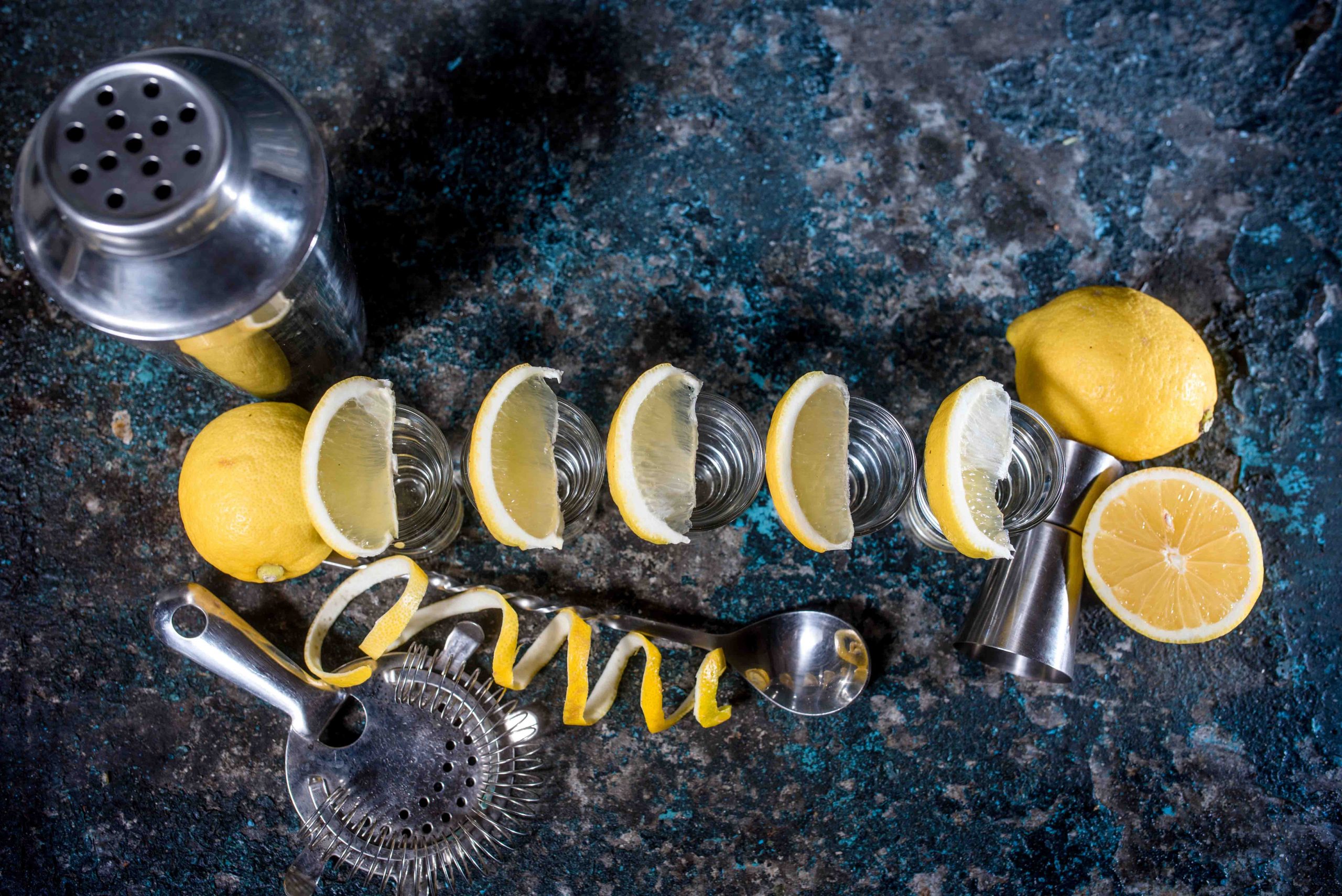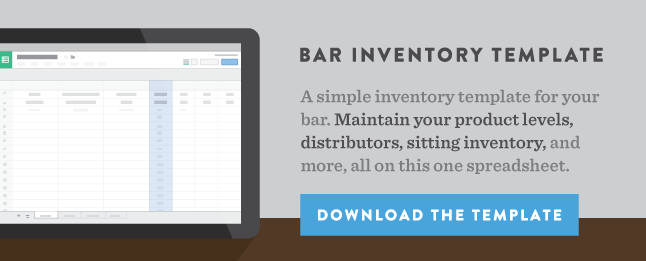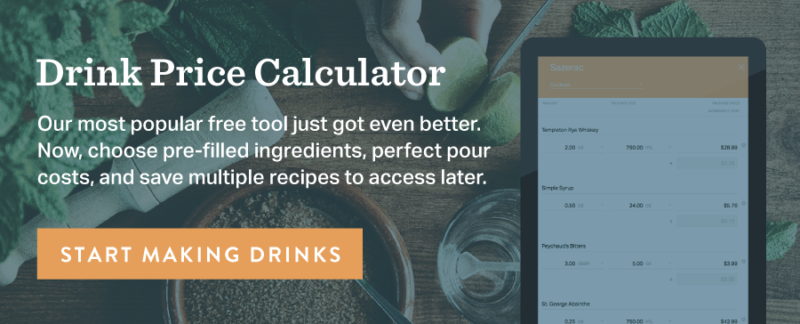


Sometimes, you just need a little help with the numbers. To manage a successful bar, you have to control the big costs: food, beverage, labor and overhead expenses like rent, equipment and licensing. It’s a multi-faceted process, and even with a bar inventory software to help control your profitability, it can be a tough job to ensure your bar or restaurant is financially successful.
Without a solid understanding of what’s going on behind the bar, it’s impossible to know if product has been sold, gone missing or been given away for free. You won’t be able to track pour costs or easily establish drink prices. You’ll start to lose control and, in turn, money.
We’ve discussed how to do liquor inventory and how to manage ordering and invoicing for a bar.
Now, it’s time for part three of this series:
In this article, we’ll discuss:
As a bar manager or owner, tracking your bar’s numbers will help you identify problems and know how to fix them. Properly counting and controlling inventory is the critical first step in understanding how your bar is doing financially.
Merely stocking your bar with the right alcohol isn’t enough. Taking inventory tells the bar manager exactly how much of each product a bar has used over a defined period of time. Doing so will allow you to check usage against the amount of liquor sold during an inventory period, which will lead to calculating your profit.
Usage is broken down by category (spirits, wine, beer), item type (tequila, vodka, whiskey), and brand (Grey Goose, Absolut, Bully Boy) in order to get an all-encompassing look at your bar’s performance. These numbers will be used to identify variance, calculate profit margins, make better purchasing decisions, and determine which products are and are not doing well. Learning how to do liquor inventory is the first step, where we understand the formula for inventory usage. Analyzing what these numbers mean comes next.
In order to protect profitability, those involved in taking inventory need to be properly trained in how to do it. This includes knowing how to:
Without inventory software, this task is always going to be a time-consuming and redundant one. But getting a grasp on your inventory process will make it easier. Things like setting pars are an important part of taking inventory, and will help for two reasons:
Once you’ve identified your usage calculations for your inventory period, you can move on to understanding the numbers.

Understanding your bar’s ordering habits and purchasing history will help you make more disciplined buying decisions when the time comes to call in your orders. How many times has a rep tried to talk you into buying new products that you don’t really need?
In order to gain a better understanding of the ordering process, you need to look at your sales figures to determine what works and what doesn’t. Creating a bar profitability matrix is an easy way to identify which products should and should not be on that order. We’ll cover this in our next post.
Observing fluctuating liquor prices and identifying the products that work for you are big parts of smart ordering. What kind of profit could you make on these products? Where would they compare to the price brackets of your menu? Here are some tips that might help you make orders for a more profitable bar:
Improving your bar’s profitability comes down to knowing the numbers. And without the ability to analyze those that come from your POS system, you won’t be able to connect the dots with the rest of your beverage program. Hopefully, your bar is using a good POS that can run the right reports, but generally, the most important ones can be found on any system: the PMIX report, the menu item report, and the daily sales report.
After taking the numbers from your inventory and invoices, you’ll use these sales reports to identify how well your beverage program is performing. You should be able to see the item price, revenue, profit percentage, and sales volume of all your products. Let’s look at this in more detail.
Once you’ve identified the pour cost for each of your products, you can compare this to the drink’s sales volume, found on these reports. For every item on your menu—cocktails, beer (both bottled and draught), wine, and liquor—
Take this data and sort each item into profit and popularity categories, and even further into classes: winners, losers, those that are too popular to get rid of, and those that need re-pricing.
If you’re looking for an easier way to see these results, calculate both the pour cost and sales volume for each item on your menu. The ones with a low pour cost and high sales volume are the winners, and the ones with a high pour cost and low sales volume are the drinks you’ll want to get rid of ASAP. Create a bar profitability matrix to see these results for every single one of your drinks. We’ll show you how to do this in our next post.
The pour cost is an essential benchmark for your bar’s profitability. Monitoring and controlling a bar’s pour cost—which means keeping it as low as possible—is the difference between a profitable bar and a failing one. Depending on the popularity of a drink, a $1.50 difference in price could mean thousands of dollars in loss each month.
A drink’s pour cost is calculated by taking the cost of the product used and dividing it by the cost of the product sold. Or, more simply, your inventory usage divided by your sales.
The average bar runs a 25-30% pour cost, but the aim, of course, is to decrease this as much as you can, a common goal being 20%. But what does a pour cost really tell us? It’s all about knowing the meaning of this critical figure—the numbers behind the number. Pour costs can be broken down into three factors:
To understand these factors, you need to dive deeper into the other profitability issues in your bar. Let’s look at the next one.
Pricing a drink menu is a complex thing, and what’s included on your menu will have a huge effect on those dollars. You need to take considerable care in developing an innovative and balanced menu for your bar or restaurant. ere are the things you’ll want to consider:
A successful menu is built from well-priced drinks. If you want to run a profitable bar, it’s crucial to calculate every single aspect of each drink, down to the garnish.
To price a drink, all you have to do is divide the bottle cost by how many ounces are in the bottle. This gives you the cost per ounce, and you can build your drinks from there, ounce by ounce. Once you’ve determined the cost of a drink—by adding up the ounces of each ingredient—you can take that number and divide it by your desired pour cost percentage to determine the drink’s price.

Here’s a real example from one of our customers.
4 oz. Gosling’s Stormy Ginger Beer @ $1.32 per can / 12 oz. = 0.11 per ounce = 0.44 total cost
1.5 oz. Green Mark Vodka @ $12.99 / 25.3 ounces = 0.51 per ounce = 0.77 total cost
Total drink cost = $1.21
Ideal pour cost = 12.95%
Drink price = $9.34
Drink price + tax = $10.00
Variance, otherwise known as “shrinkage” or “lost product”, is one of the biggest detractors from a bar’s profitability. Variance is calculated by comparing the difference in product between the amount sold during a given period to the amount used during this period. In an ideal world, these numbers would line up perfectly, but the industry average variance rate hovers around 25-30%.
You’ll never be able to eliminate variance in your bar, but there are a few ways you can try to reduce it. These include:
Monitoring your bar’s inventory, purchasing, pour cost, variance, sales, and profitability numbers is a huge part of running a successful bar. But for any bar manager or owner, it can be a painful and time-consuming job to take on.
We’re here to make it easier, to help you run a better business.
Schedule 15mins to chat with a product specialist
Start a FREE Trial Today! BevSpot offers full product education and account setup for all customers! No card Information needed!
